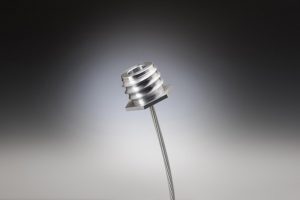 Bergen Cable explains the adverse effects of bending wire rope
Bergen Cable explains the adverse effects of bending wire rope
December 2, 2020 REDWIRE is news you can use from leading suppliers. Powered by FRASERS.
Posted by Bergen Cable Technology, Inc
Mfr Mechanical Cable, Cable Assemblies & Push-Pull Controls. Original Mfr Of Safety Cable, A Patented Fastener Reten... Read more
Subscribe
Free REDWIRE e-newsletter

Bergen offers expert tips on wire rope.
In addition to the company’s vast cable inventory, wire rope is an offering that brings customers to Bergen Cable. Not only does the Bergen team provide great industrial solutions – it also serves as a team of experts who can advise clients on how to get the most out of these products. For example, the Bergen website has ample resources about using cable and wire rope, including a guide to the risks of bending wire rope.
Fatigue and lost strength
According to the Bergen guide, wire rope is often subject to bending around sheaves or drums. Its usefulness may depend on the sheave and drum locations. Users should lubricate wire rope properly to make it effective around these items, as wires and strands slide on each other during bending.
Loss of rope strength can result from the inability of wires and strands to adjust to altered positions when bending wire rope. Strength often decreases in a marked degree when the sheave diameter gets smaller relative to the rope diameter, and the strength loss from bending over sheaves is usually around four per cent. Repeated flexing of wires develops bending loads that set up points of stress concentration, even when within the wire’s elastic limit.
Another frequent result of bending wire rope is fatigue, which appears in the form of small cracks in wires at over-stressed foci. These propagate under repeat stress cycles until the last sound metal cannot handle the bending load. This leads to broken wires that show no sign of cross-section contraction.
Since many factors affect the lifespan of Bergen wire rope, it is impossible to determine what the smallest size of sheave or drum is that enables the most effective rope performance. With slow speeds and light loads, smaller sheaves and drums can be used without leading to premature fatigue, and reverse bends – or bending wire rope in one direction and then the opposite way – may lead to high, premature fatigue. Larger sheaves are necessary to minimize damage if the application needs reverse bends.
Trust Bergen for top wire-rope expertise.
For more information, contact Bergen.
Share
Posted by Bergen Cable Technology, Inc
Mfr Mechanical Cable, Cable Assemblies & Push-Pull Controls. Original Mfr Of Safety Cable, A Patented Fastener Reten... Read more
